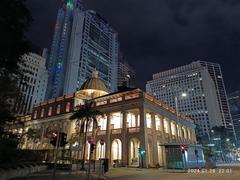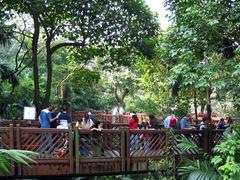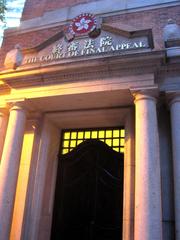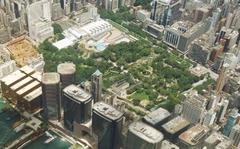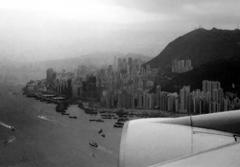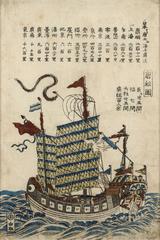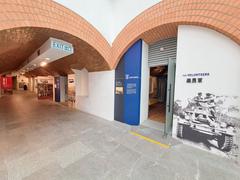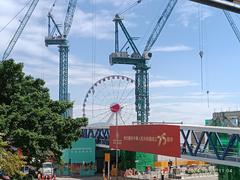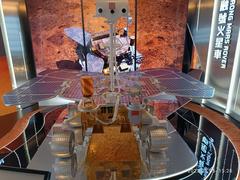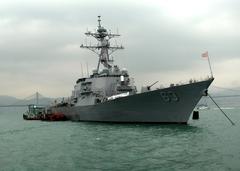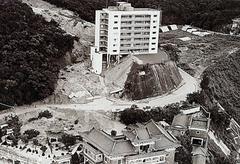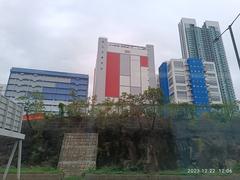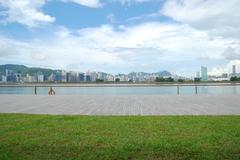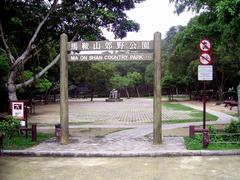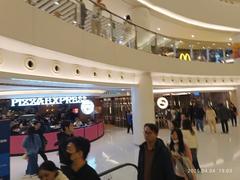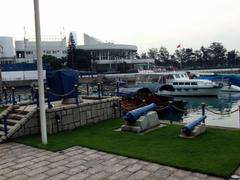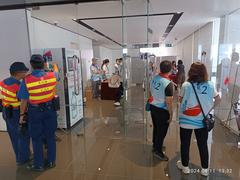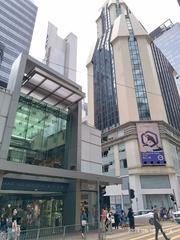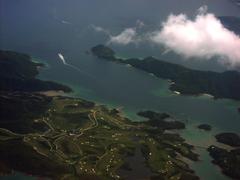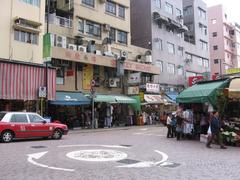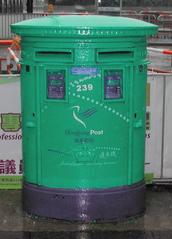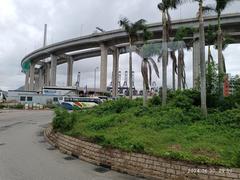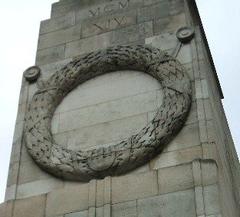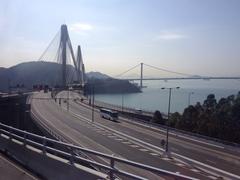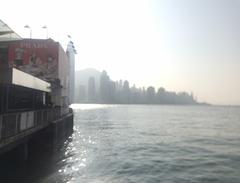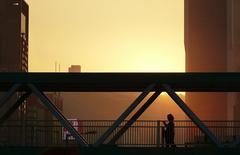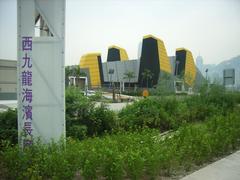Comprehensive Guide to Visiting 沙燕橋 Sand Martin Bridge, Hong Kong
Date: 31/07/2024
Introduction
沙燕橋 Sand Martin Bridge in Hong Kong is not merely a piece of infrastructure but a symbol of cultural pride, historical significance, and modern engineering. This bridge, named after the Shatin Martins, the first Hong Kong baseball team to win a league in 1983, serves as a testament to local achievements and community spirit (Wikipedia). Located in the Sha Tin District, the bridge spans the Shing Mun River, connecting Sha Tin Town Centre with Sha Tin Wai. Its strategic placement has significantly contributed to the area’s development by facilitating the smooth movement of vehicles and pedestrians and enhancing local accessibility (Wikipedia). The bridge’s design, featuring a four-lane dual carriageway, pedestrian walkways, and cycling tracks, reflects the forward-thinking urban planning of Hong Kong. Additionally, the bridge has gained cultural significance through its appearance in the Hong Kong film ‘Weeds on Fire,’ further embedding it in the collective memory of the local community (Wikipedia).
Table of Contents
- [History of 沙燕橋 Sand Martin Bridge, Hong Kong](#history-of-沙燕橋-sand-martin-bridge-hong-konghistory-of-沙燕橋-sand-martin-bridge-hong-kong)
- [Origins and Naming](#origins-and-namingorigins-and-naming)
- [Construction and Design](#construction-and-designconstruction-and-design)
- [Cultural Significance](#cultural-significancecultural-significance)
- [Engineering Feats](#engineering-featsengineering-feats)
- [Impact on Local Development](#impact-on-local-developmentimpact-on-local-development)
- [Future Prospects](#future-prospectsfuture-prospects)
- [Visitor Information](#visitor-informationvisitor-information)
- [Visiting Hours](#visiting-hoursvisiting-hours)
- [Ticket Prices](#ticket-pricesticket-prices)
- [Special Events and Guided Tours](#special-events-and-guided-toursspecial-events-and-guided-tours)
- [Visitor Tips](#visitor-tipsvisitor-tips)
- [Best Time to Visit](#best-time-to-visitbest-time-to-visit)
- [Photography Spots](#photography-spotsphotography-spots)
- [Cycling](#cyclingcycling)
- [Local Attractions](#local-attractionslocal-attractions)
- [Public Transport](#public-transportpublic-transport)
- [FAQ](#faqfaq)
History of 沙燕橋 Sand Martin Bridge, Hong Kong
Origins and Naming
The Sand Martin Bridge, known in Chinese as 沙燕橋, is a significant structure in Hong Kong. Named after the Shatin Martins, the first baseball team from Hong Kong to win a league, this victory in the 1983 Hong Kong Little League Open brought fame to the team and left a lasting legacy in the form of the bridge’s name (Wikipedia).
Construction and Design
The Sand Martin Bridge is part of the Sha Tin Rural Committee Road and serves as a crucial connection between Sha Tin Town Centre and Sha Tin Wai. The bridge spans the Shing Mun River, linking Yuen Wo Road to the west and Tai Chung Kiu Road to the east. This strategic placement facilitates the movement of both vehicles and pedestrians, enhancing the accessibility of the surrounding areas (Wikipedia).
The bridge features a four-lane dual carriageway, complete with pedestrian walkways and cycling tracks. Safety is a priority, as evidenced by the aluminum vehicular parapets and pedestrian fences that line the bridge. These design elements ensure that both motorists and pedestrians can use the bridge safely and efficiently (Wikipedia).
Cultural Significance
The Sand Martin Bridge holds a special place in Hong Kong’s cultural landscape, not just for its functional role but also for its symbolic significance. The bridge is a testament to the achievements of the Shatin Martins, a team that brought pride to the local community. This connection to a local sports team adds a layer of cultural richness to the bridge, making it more than just a piece of infrastructure.
The bridge also gained fame through its appearance in the Hong Kong movie “Weeds on Fire,” which tells the story of the Shatin Martins. This cinematic portrayal has further cemented the bridge’s place in the collective memory of the local community (Wikipedia).
Engineering Feats
The construction of the Sand Martin Bridge involved several engineering challenges and innovations. The bridge’s design had to account for the heavy traffic it would support, both vehicular and pedestrian. The inclusion of cycling tracks and pedestrian walkways was a forward-thinking move, anticipating the growing trend of cycling and walking as modes of transport in urban areas.
Moreover, the bridge’s aluminum vehicular parapets and pedestrian fences are not just safety features but also engineering marvels. These elements are designed to withstand the wear and tear of daily use while maintaining their structural integrity. This focus on durability and safety reflects the high standards of engineering that went into the bridge’s construction (Wikipedia).
Impact on Local Development
The Sand Martin Bridge has played a pivotal role in the development of the Sha Tin area. By providing a reliable and efficient connection between Sha Tin Town Centre and Sha Tin Wai, the bridge has facilitated the flow of people and goods, contributing to the area’s economic growth. The improved accessibility has attracted businesses and residents alike, transforming Sha Tin into a bustling urban center.
The bridge’s impact extends beyond just economic benefits. It has also enhanced the quality of life for local residents by reducing travel times and providing safe pathways for pedestrians and cyclists. This has encouraged more people to adopt healthier, more sustainable modes of transport, contributing to the overall well-being of the community (Wikipedia).
Future Prospects
Looking ahead, the Sand Martin Bridge is expected to continue playing a vital role in the region’s development. As urbanization and population growth continue, the bridge’s capacity to handle increased traffic will be crucial. Future upgrades and maintenance will likely focus on enhancing its structural integrity and possibly expanding its capacity to accommodate more users.
The bridge’s cultural significance is also expected to grow, especially as more people learn about its history and the story of the Shatin Martins. This blend of functional utility and cultural heritage makes the Sand Martin Bridge a unique and enduring landmark in Hong Kong (Wikipedia).
Visitor Information
Visiting Hours
The Sand Martin Bridge is open to visitors 24 hours a day, seven days a week. While there are no restricted visiting hours, early mornings or late afternoons are recommended for a more pleasant experience.
Ticket Prices
Visiting the Sand Martin Bridge is free of charge. There are no ticket prices or entry fees associated with accessing the bridge.
Special Events and Guided Tours
Currently, there are no regular guided tours specifically for the Sand Martin Bridge. However, special events and community activities occasionally take place near the bridge, particularly during local festivals. It’s advisable to check local listings or tourism websites for any upcoming events.
Visitor Tips
Best Time to Visit
Early mornings or late afternoons are ideal for a visit, as the lighting is perfect for photography, and the weather is generally more pleasant.
Photography Spots
The pedestrian walkways offer excellent vantage points for capturing the bridge and the surrounding scenery. Don’t forget to bring a wide-angle lens to capture the full span of the bridge.
Cycling
If you’re a cycling enthusiast, the bridge’s cycling tracks provide a safe and scenic route. You can rent bicycles from nearby shops in Sha Tin Town Centre.
Local Attractions
Combine your visit to the bridge with a trip to other nearby attractions like the Sha Tin Park or the Hong Kong Heritage Museum, both of which are within walking distance.
Public Transport
The bridge is easily accessible via public transport. The nearest MTR station is Sha Tin, from where you can take a short bus ride or walk to the bridge.
FAQ
- What are the opening hours of the Sand Martin Bridge? The bridge is open 24 hours a day, seven days a week.
- Are there any guided tours available for the Sand Martin Bridge? Currently, no regular guided tours are available, but special events may occur during local festivals.
- Is there an entry fee for the Sand Martin Bridge? No, visiting the bridge is free of charge.
Conclusion
沙燕橋 Sand Martin Bridge stands as a multifaceted symbol of Hong Kong’s heritage, engineering prowess, and community spirit. Since its inception, the bridge has played a pivotal role in the development of the Sha Tin area, providing a crucial link that enhances accessibility and stimulates economic growth. Its design reflects a commitment to safety and efficiency, catering to both vehicular and pedestrian traffic. Beyond its functional utility, the bridge holds cultural significance, serving as a lasting tribute to the Shatin Martins and their historic victory in 1983 (Wikipedia). The bridge’s role in local films and its frequent appearance in community events further cement its place in the cultural landscape of Hong Kong. As urbanization continues, 沙燕橋 Sand Martin Bridge is expected to remain a vital infrastructure component, supporting the region’s growth while preserving its rich heritage. For visitors, the bridge offers a blend of historical insight, modern engineering, and scenic beauty, making it a must-visit landmark in Hong Kong.
References
- Wikipedia. (n.d.). Sand Martin Bridge. Retrieved from https://en.wikipedia.org/wiki/Sand_Martin_Bridge
- Wikipedia. (n.d.). Shing Mun River. Retrieved from https://en.wikipedia.org/wiki/Shing_Mun_River

